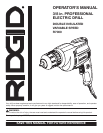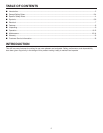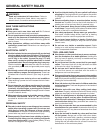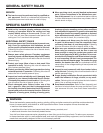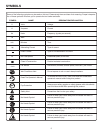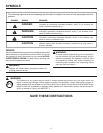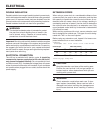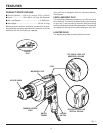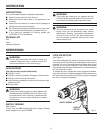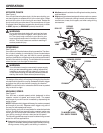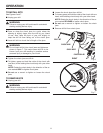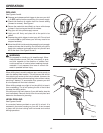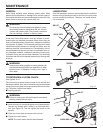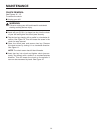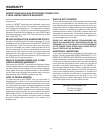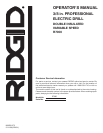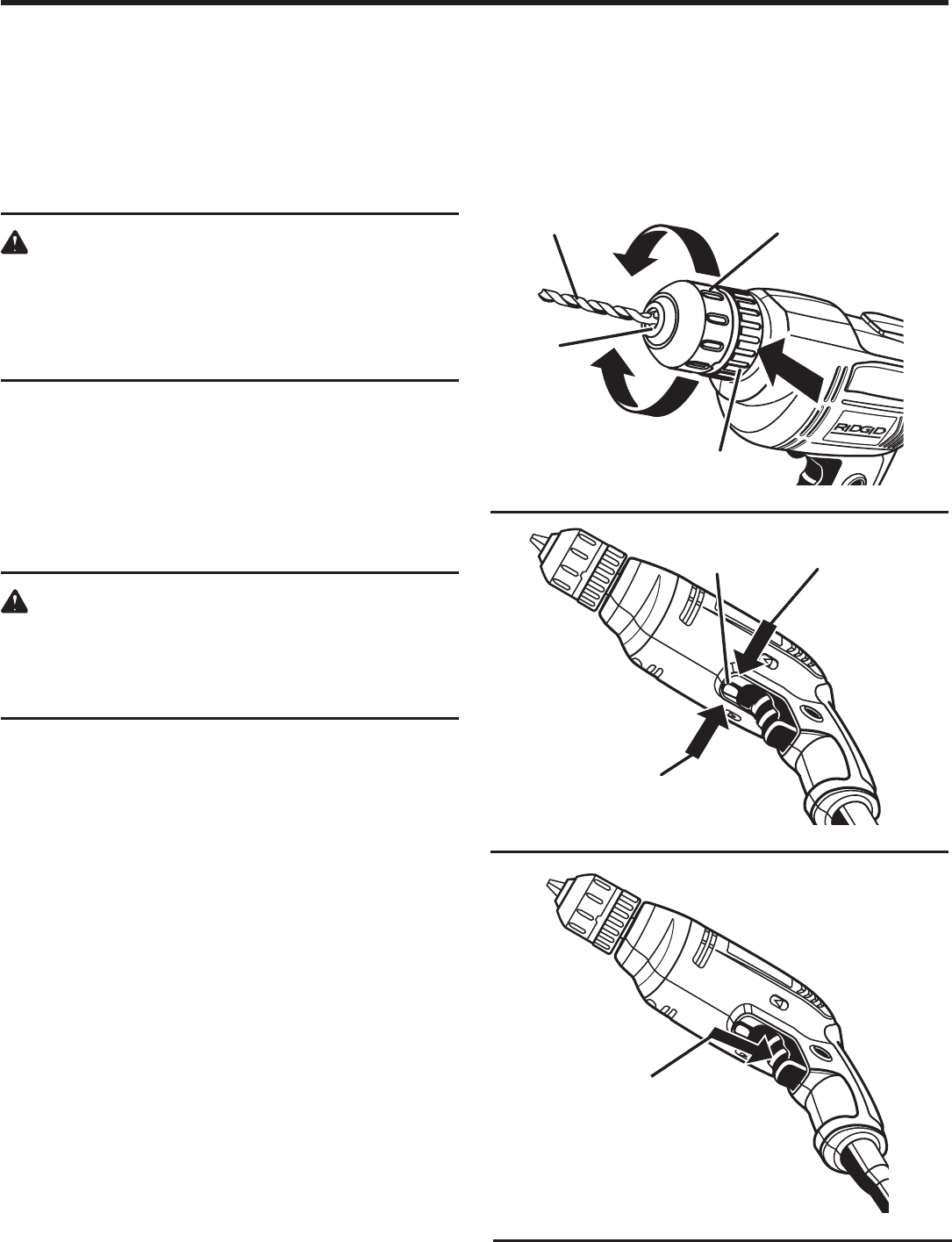
10
OPERATION
KEYLESS CHUCK
See Figure 3.
Your new drill has a keyless chuck. As the name implies, you
can hand tighten or release drill bit in the chuck jaws. Grasp
and hold the collar of the chuck with one hand. Rotate the
chuck body with your other hand. The arrows shown in figure
3 indicate which direction to rotate the chuck body in order
to GRIP (tighten) or RELEASE (unlock) the drill bit.
WARNING:
Do not hold the chuck body with one hand and use
the power of the drill to tighten chuck jaws on drill
bit. The chuck body could slip in your hand or your
hand could slip and come in contact with a rotating
drill bit. This could cause an accident resulting in
serious personal injury.
REVERSIBLE
See Figure 4.
Your electric drill has the feature of being reversible. The direc-
tion of chuck rotation is controlled by a lever located above
the switch trigger. With your drill held in normal operating
position, the direction of rotation lever should be positioned to
the left of the switch for drilling. The drill direction is reversed
when the lever is to the right of the switch.
Fig. 4
FORWARD-REVERSE
LEVER
REVERSE
FORWARD
®
Fig. 3
DRILL BIT
CHUCK
JAWS
RELEASE
(UNLOCK)
GRIP
(TIGHTEN)
CHUCK
COLLAR
CHUCK BODY
WARNING:
Your drill should never be connected to power supply
when you are assembling parts, making adjustments,
installing or removing drill bits, cleaning, or when not
in use. Disconnecting your drill will prevent accidental
starting that could cause serious personal injury.
The design of the switch will not permit changing the direction
of rotation while the drill is running. Release the switch trigger
and allow the drill to stop before changing its direction
NOTE: Your drill will not run unless the switch lever is pushed
fully to the left or right.
VARIABLE SPEED
See Figure 5.
Your drill has a variable speed switch designed to allow
operator control of speed and torque limits. The speed
and torque of your drill can be increased by depressing the
switch trigger.
NOTE: Depress switch trigger all the way for maximum speed
and torque of your drill. Depress switch trigger only part of
the way for less speed and torque.
Avoid running your drill at low speeds for extended periods
of time. Running at low speeds under constant usage may
cause your drill to become overheated. If this occurs, cool
your drill by running it without a load and at full speed.
The following guidelines may be used in determining correct
speed for various applications:
n Low speed is ideal when minimum speed and power is re-
quired. For example, starting holes without center punching,
driving screws, mixing paint, and drilling in ceramics.
Fig. 5
TO INCREASE SPEED,
PULL SWITCH TRIGGER
n Medium speed is suitable for drilling hard metals, plastics,
and laminates.
n High speed produces best results when maximum power
is required. For example, drilling in wood; soft metals such
as aluminum, brass, and copper, and when using driving
accessories.



